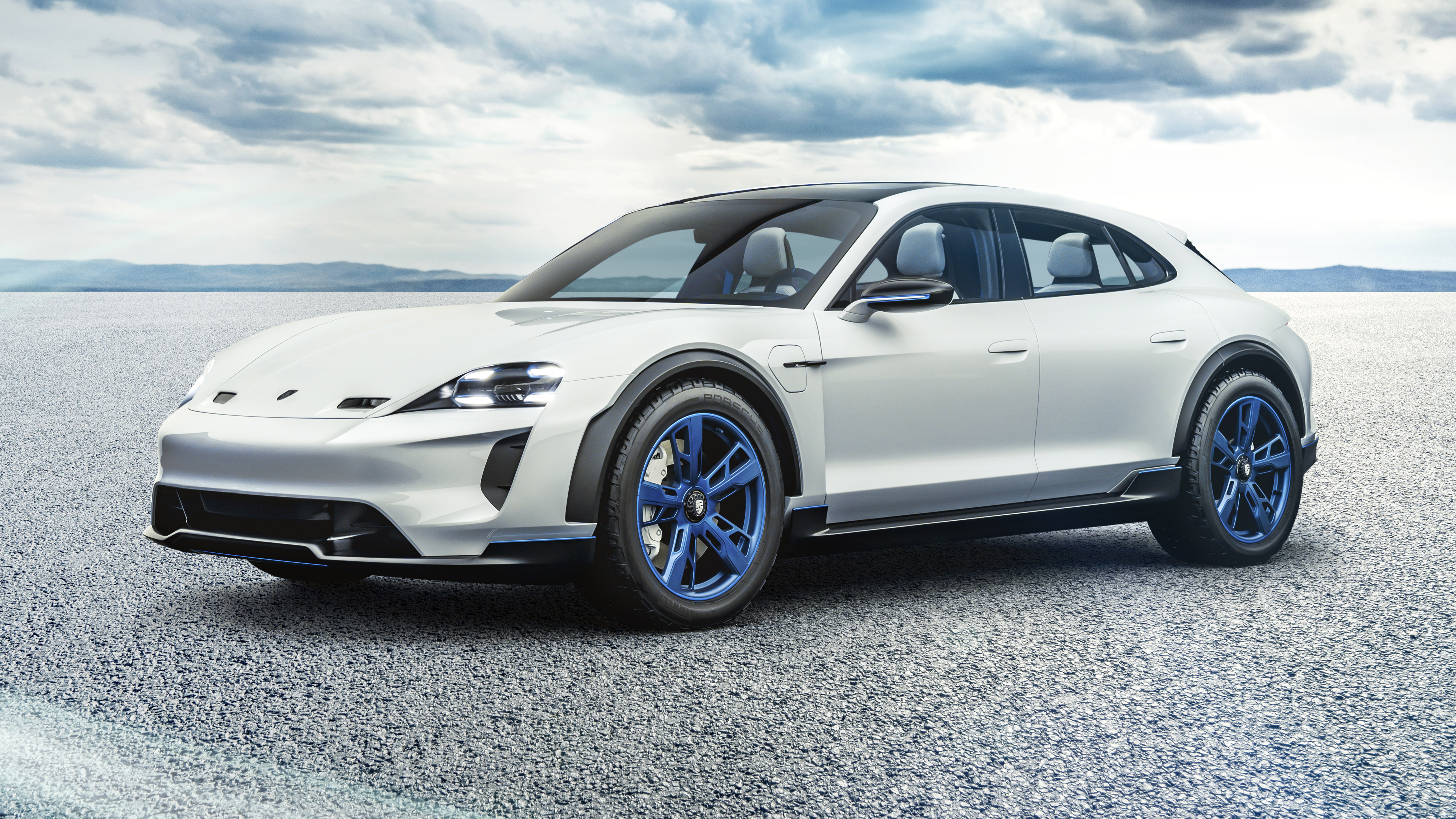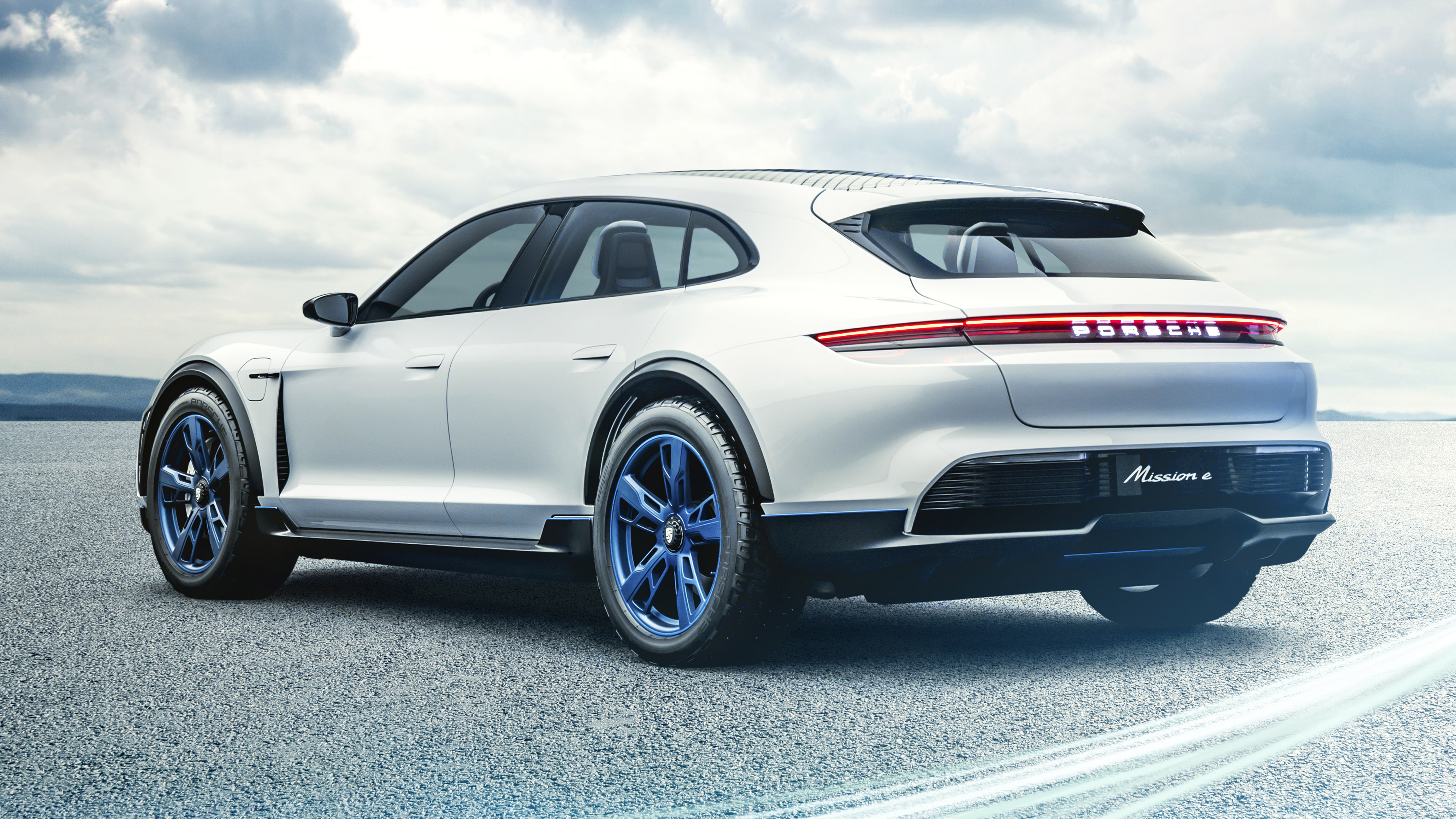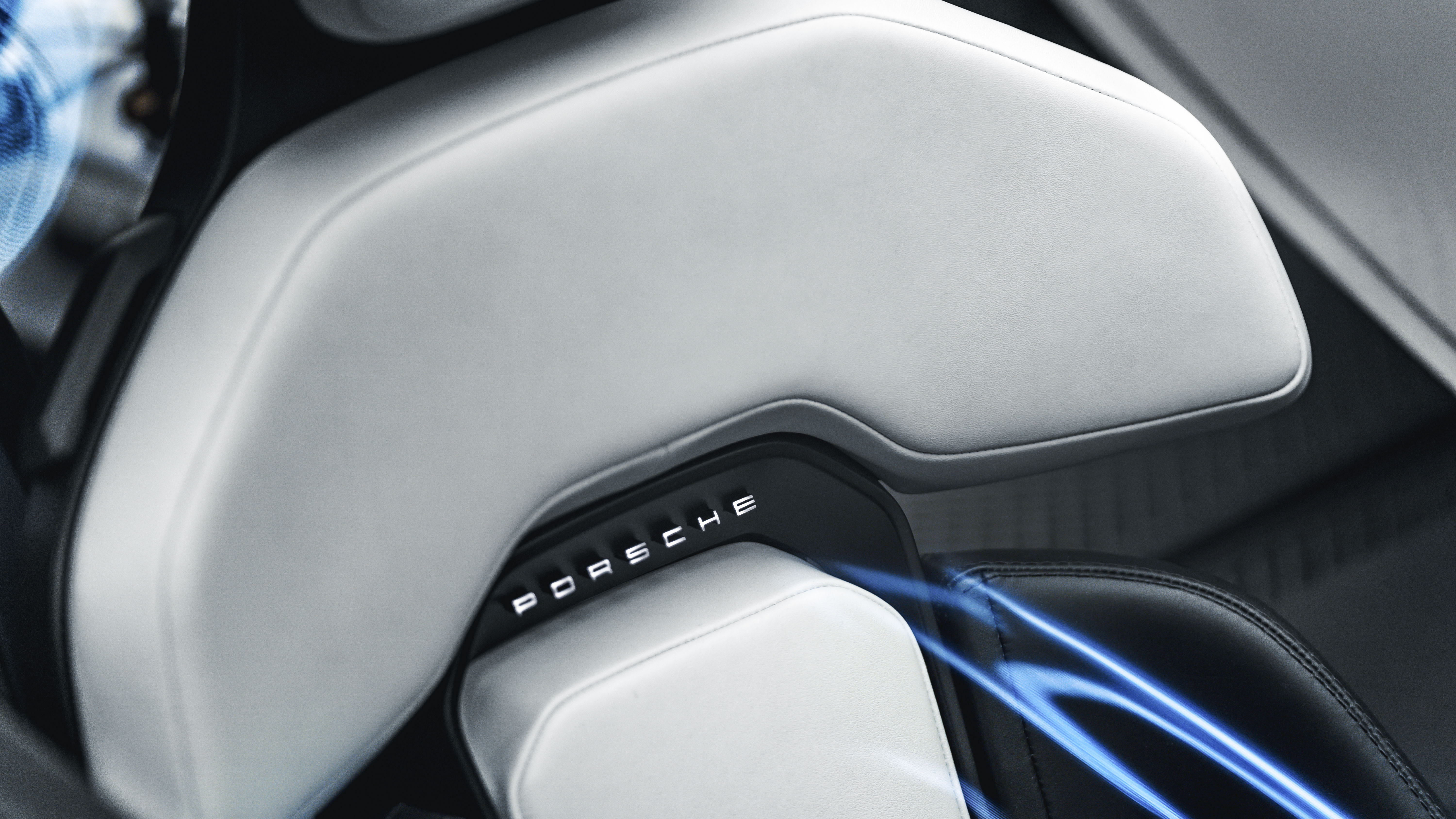
Porsche reveals its Mission E Cross Turismo concept
Fully electric 'cross utility vehicle' revealed, previews production saloon you'll see in 2019
Windscreen wipers. Actual glass wing mirrors. Somewhere you could conceivably mount a number plate. Leaving off these tedious quotidian details is an easy short-cut to building glamour into a concept car. But their presence signifies something that's actually even more exciting. They mean that this isn't just eye-candy for a podium.
They mean this is very close to something you'll see on actual roads. And the Porsche Mission E Cross Turismo has them all. Not that this is exactly a production machine. A little decoding is necessary.
Michael Mauer, Porsche design overlord, starts that process by telling Top Gear: "The proportions and dimensions give you a hint: this is more realistic than the first Mission E concept." In other words, the basic bodywork and interior here is pretty much as per the production Mission E saloon that's launching next year. Its sightly shorter than a Panamera, and the electric platform is all-new.
Then he adds: "This concept also shows possibilities of the future lineup." So they're already planning a range of Mission E bodies, and this shooting-brake-esque roof and tailgate are for the second model. Just like the Panamera spawned the Sport Turismo.
Finally there's this Cross business. That's the slightly raised ride height, the chunky tyres and the body armour around the arches. Here the messaging really does start to get a bit convoluted. Quite apart from its connected boot-mounted drone (we'll come to that), does the beautiful and pure idea of the Mission E really need to be turned into, what, a Mission E Allroad? A Mission E Scout? Or – for those of you with long sad memories of MG Rover's death-throes desperation – a Mission E Streetwise?
Whether a production electric Porsche would actually get the Cross treatment, or whether this bit really is just motorshow fun, isn't yet clear. But Mauer stresses what we already know: that Porsche sees big business in crossing over. "That's where Porsche is now, and we'll get stronger in that direction. But there are just four sports seats. We're not the world champion for interior space, but there's a lot of functionality."
Peter Varga, Porsche's exterior design director, has more to say about the body protection parts. "It was important to me to have a light look, a Porsche look. Off-road cars usually look heavy. So we didn't close the wheel-arch trim onto the sill. It's more like the floating aero of a GT3 car."
The Cross Turismo concept is a runner, using the same mechanical and electrical setup as the first Mission E, due out next year. That means front and rear electric motors, good for 0-62mph in 3.5 seconds and 0-125 in 12. It'll do those blazing numbers even when the battery is fairly depleted – a condition not met by a Tesla.
Its range is just over 300 miles, when driven with the sloth of a EU-cycle tester, but of course that'll be significantly eroded if you drive like a Porsche owner. But Europe's upcoming network of superfast chargers should diminish that issue.
The Mission E doesn't only have the performance of a Porsche, it has the looks of one. OK, compared with the 2015 show car, the Rubenesque hips have been lost and the suicide doors too, but it still has Mauer's touchstones of Porsche DNA: "The low bonnet and raised wings, the tapering roof, the rear shoulder and the shape of the DLO. And the tail lamp band."
Top Gear
Newsletter
Thank you for subscribing to our newsletter. Look out for your regular round-up of news, reviews and offers in your inbox.
Get all the latest news, reviews and exclusives, direct to your inbox.
But just as other Porsches have their own particular characteristics – only the 911 has round headlights – Mauer's team is drawing up some specific cues for the electric cars. "Airflow is important for this type of car so we make a feature of it.
"When we started EVs, I thought we could have a clean front like early Porsches. In fact the motor and battery need a lot of cooling. You also have to look at drag because of range. Now you could just cover the wheel-arches, but as a designer I didn't like that idea – you have to see the wheels on a sports car. So we have air curtains around the front wheels. The headlamp is more like an air intake with the headlamp within it. Below the back bumper there's no need to cover exhaust pipes, so it's an aerodynamic part."
Proportions of course are critical. They're hard to read here because of the 'Cross' paraphernalia of body cladding and lumpy tyres. But actually the body is shallow from floor to roof, and wide.
Mauer says that's critical. "Porsches need dramatic proportions in width-to-height. In an EV you have the battery in the floor for driving dynamics, but you need to package the people on top. That drives the height of the car. This is a big, big challenge. It would have been easier to have done a conventional tall SUV." But he claims the battery of this car is thin relative to its capacity, so the seats aren't pushed too high.
"Inside, it's a combination of the new and old worlds," says Mauer. So you get the wide, oval Porsche instrument pod, but it's a thin curved screen. Apart from the steering wheel and stalks, all switches, even the windows, are on glass touch panels. There's no carpet to be seen.
The cabin is full of 'floating' elements, again in search of an impression of lightness. Interior design chief Ivo van Hulten calls these parts – wheel spokes, armrests, console – 'satellites'. The air vents have no blades. Instead, electrostatic wings control the air direction from upstream of the outlets.
"There is an HUD," says van Hulten, "but you don't have that visible hole in the dash where the projector usually is. We've covered it in fine mesh, and the image projects through."
"The dash layout and cockpit is relatively feasible," he says. "That's the message we want to send." In the coy language of concept-car designers, you seldom get a clearer signal than that.
The seats aren't so production-ready. They'll need to bulk up because of mundane production stuff like crash strengthening and sidebags. Neither can you expect any time soon your Porsche car to arrive with a Porsche drone in the boot.
But the designers are thinking this way. Van Hulten explains that the designers at Porsche's Weissach studio don't just do cars any more. They try to understand the whole of life-with-Porsche. In the jargon, the ownership experience. So they reckon Porsche's servers could find you a scenic route, send it to the car's nav, and suggest stopovers where you'd launch the drone which would follow the car as you drive, sharing the footage to your friends who also inhabit this curated Porsche world.
It's indicative of a major shift to new business worlds for the company. Porsche now means electricity, crossovers, digitisation, connectedness, sharing. It's a long way from the solitude of tearing up an empty mountain road in a 911.
And you can be sure they mean it. This concept has fantastical details but overall it's much more than just a fantasy. Says Mauer: "Our unique position is that if we do a concept and it comes to production it doesn't look so different. As a designer of course I'd love to do an even more radical concept. But this is better for our credibility."
Images: Mark Riccioni
Trending this week
- Car Review
BMW 1 Series
- Top Gear's Top 9
Nine dreadful bits of 'homeware' made by carmakers










